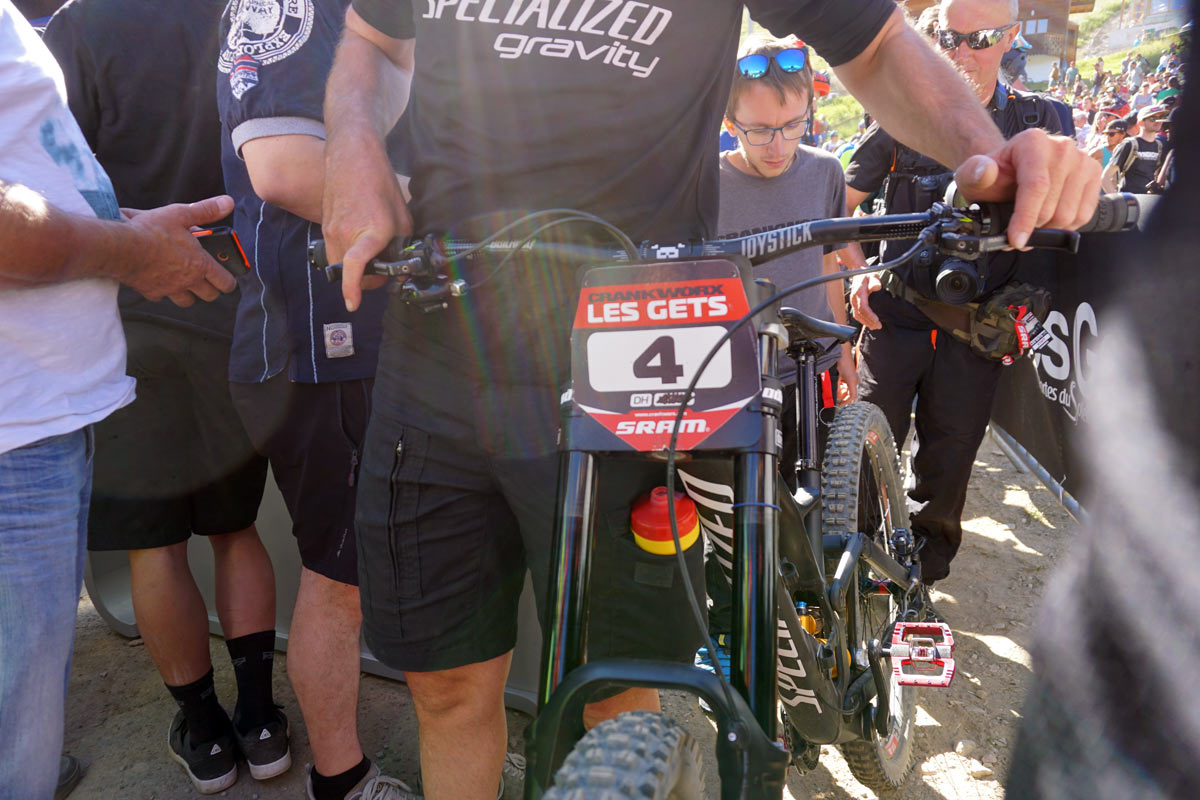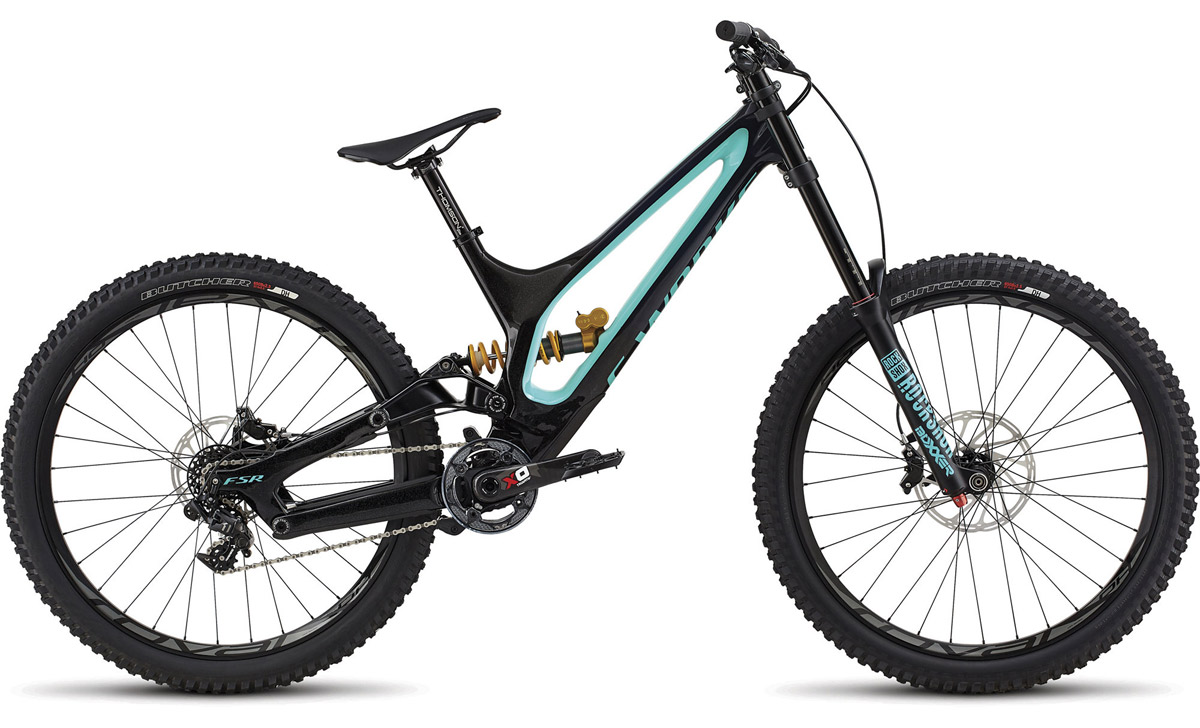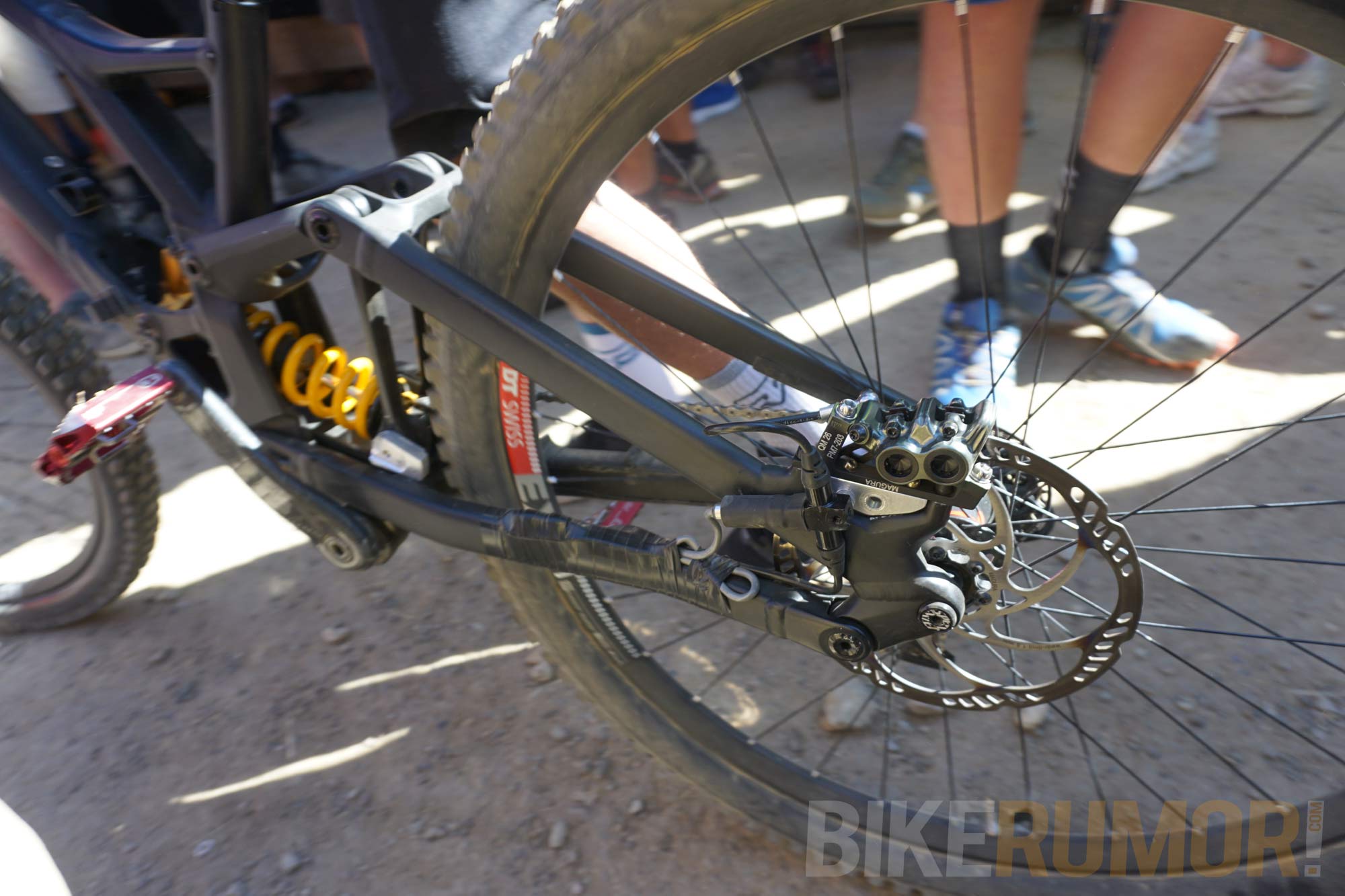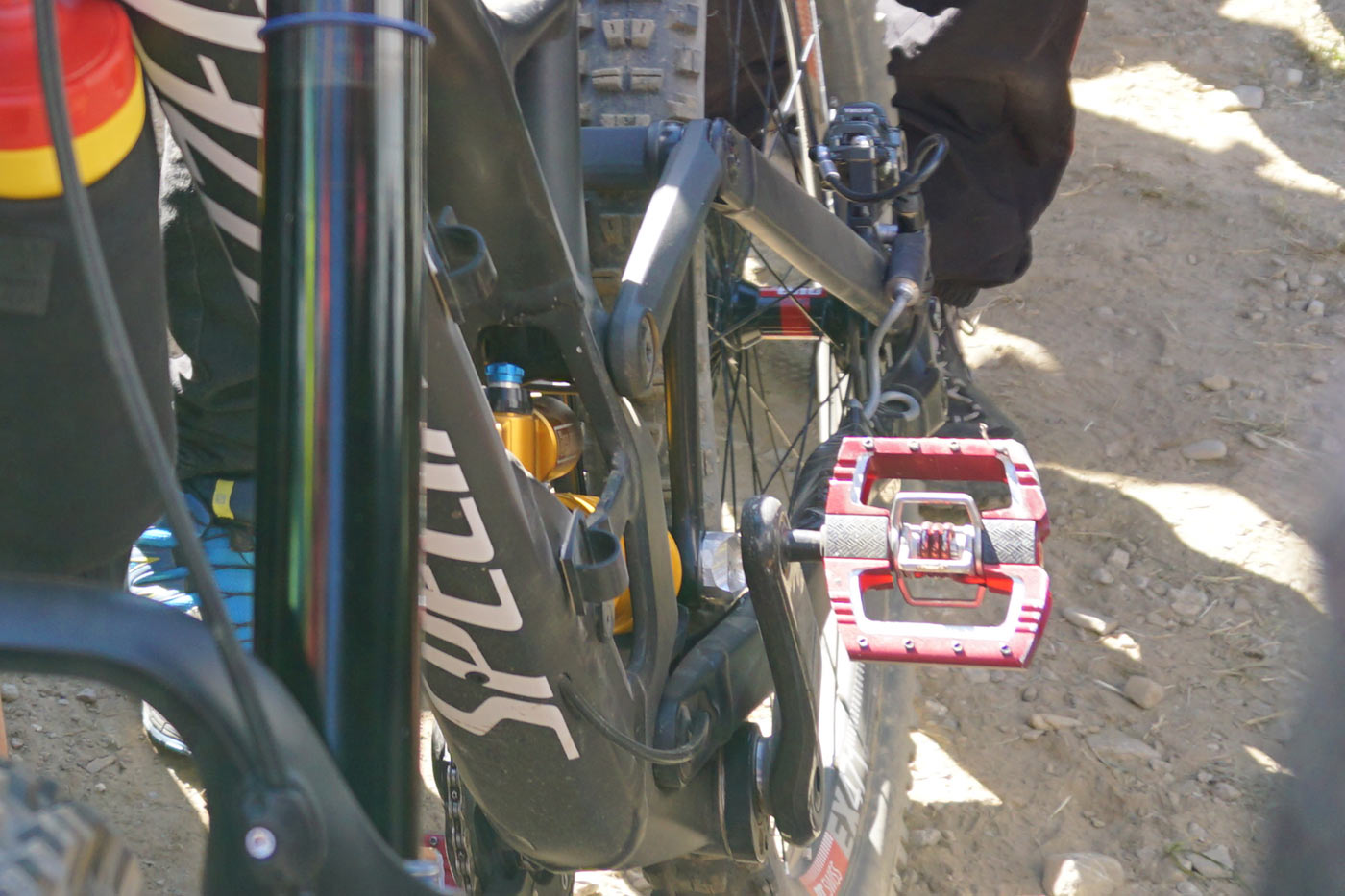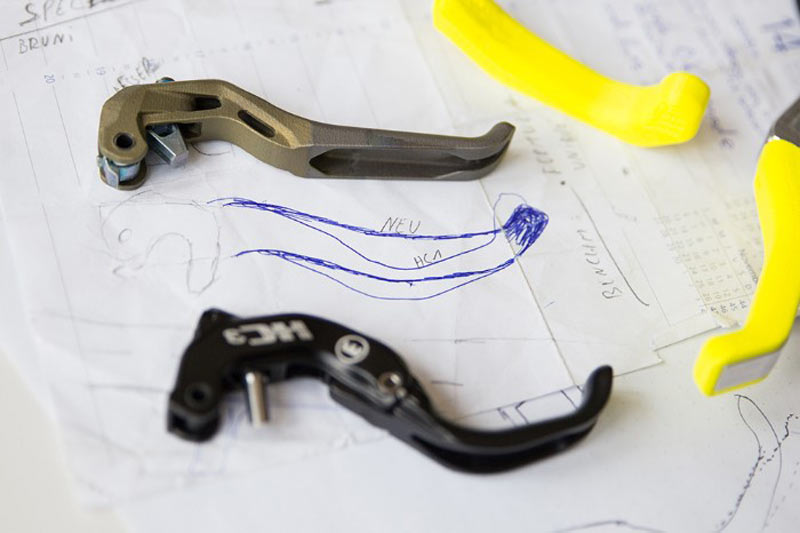Loic Bruni has been testing (if not racing) a prototype Specialized downhill bike on the World Cup circuit this year, with some pit sightings at Fort William. But at Crankworx Les Gets, it was rigged with some interesting rear brakes and other hardware and saw more action. We were only able to grab a few quick photos before it was whisked away, out of the public eye, but it’s easy to see the frame is getting some major changes compared to the current Demo:
Shown above for reference, the current 2018 Specialized Demo uses their FSR four-bar linkage design with the shock being driven by the upper rocker. Note that the rear pivot is much lower and farther forward than on the prototype shown below:
This prototype is driving the shock off the chainstays…sort of. It’s hard to see here, but that connector link running from the seatstay to the chainstay is attached to a separate arm, which holds the lower shock mount. That separate arm appears to share the same main pivot at the chainstays, but would have to move independently of them in order for this system to work. Click the image to enlarge and you’ll see a raw machined piece of metal at the lower shock mount which could offer multiple lower shock mounting positions. Prior prototypes under Miranda Miller used adjustable upper shock mounts, which aren’t visible here. All of which suggests the team is on test mules and helping Specialized dial in the geometry and suspension kinematics.
Another big difference between this prototype and the current model is the forward placement of the main pivot. The chainstays mount very far forward of the bottom bracket, which is a design similar to what we saw on the Polygon DH prototype. That bike uses the NAILD system, which promises extremely little (if any) pedaling influence on the suspension. If the goal is the same here, it could mean a dramatic upgrade to the FSR design that would require less platform damping, translating to a bike that could be more supple over the small bumps for better traction without giving up pedaling performance.
The massive cable ports stuck to the downtube further suggest this is a test mule and are likely used for cables and wires coming from sensors up to a head unit. Not during racing, but for test runs, many brands stick data acquisition computers and sensors to the bikes to see how they perform in real time. You know, sensors like this:
The rear brake hose was routed through this contraption, which had wires running along the chainstay. They didn’t appear to connect to anything for the race run, but that looks like just enough wire taped up to run all the way to a head unit on the frame. A second mounting hole on the silver bit bolted under the brake mount could be used for motion sensors, accelerometers or other measurement devices. You can also see an odd little black piece stuck to the downtube in front of the upper shock mount on the other photos.
The bike was moving too quickly to note much else, but we do think these look like 29er wheels, not the 27.5″ of the current bike. There were a lot of top racers on 29er bikes at Crankworx DH, so we wouldn’t be surprised if that’s the direction Specialized is headed.
On the front of the brakes are prototype levers Magura developed for Bruni. The rider wanted a different shape, so Magura used his sketches to create 13 different 3D-printed titanium levers for him to test in practice and racing. The result is something that we’ll likely see as a production option, joining the other four distinct lever blade options already available from Magura. Among them are the Danny MacAskill HC3 levers that offer a ton of user adjustability.
